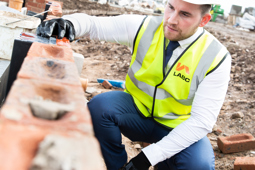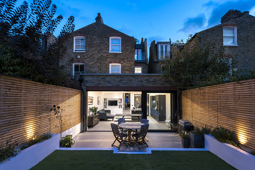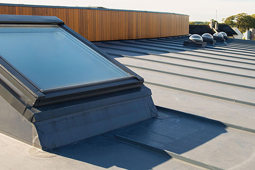If your property is thatched you need to use a specialist thatcher for your extension roof and they will be able to give you advice about finding a designer who understands this method of roofing.
There is a very useful guide known as 'The Dorset Model' which details the requirements for extending or constructing a thatched roof building situated less than 12m from the boundary. Each proposal has to be considered on its merits, and early consultation with your local authority building control team is recommended.
Rafters must be overdrawn with a minimum 30 minute fire barrier (integrity and insulation) and this barrier should also be water resisting. 50 x 25 battens are recommended on a microporous boarding to allow the thatch to breathe. (Dorset Fire and Rescue Service recommend a 60 minute barrier under the thatch for property protection). You cannot use a flexible material or cavity foam as a fire resisting barrier.
Any chimney, including the pot, should terminate at least 1.8m above the height of the ridge. Due to the risk of condensation forming as hot gases cool, the chimney pots should be limited to a maximum height of 600mm.
A domestic mains powered interlinked smoke alarm system will be required with at least one smoke alarm fitted in the roof void. The system should be designed and installed to B.S. 5839 Pt. 6: 2019
The fire barrier must be sealed with intumescent mastic (a fire-rated sealant) along all of its junctions.
Things to think about (and your insurer may require them)
The provision of a loft hatch is recommended for firefighting purposes. The minimum recommended size is 600mm x 900mm.
You should seek advice from a competent electrical contractor about the most appropriate type of wiring system. Effects from rodent damage and straw debris need to be considered.
Recessed lighting is NOT recommended in any ceilings below the thatch. Light fittings within the roof space must be in a bulkhead fitting. External floodlights should not be located under the eaves of the thatch.
Spark arrestors on the flues are NOT recommended because they can clog and restrict the flow of flue gases.
It’s recommended that an external water tap supplied from the rising main is fitted with a hose capable of reaching all parts of the roof.
Any metal plumbing in the roof space should use compression joints to avoid the use of blow torches.
Statistics show that 70% of fires in thatched homes are caused by solid fuel burning appliances.
The installation of a woodburner or a multi fuel appliance requires great caution due to the extreme temperatures generated over prolonged periods.







